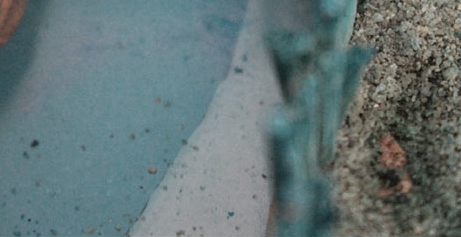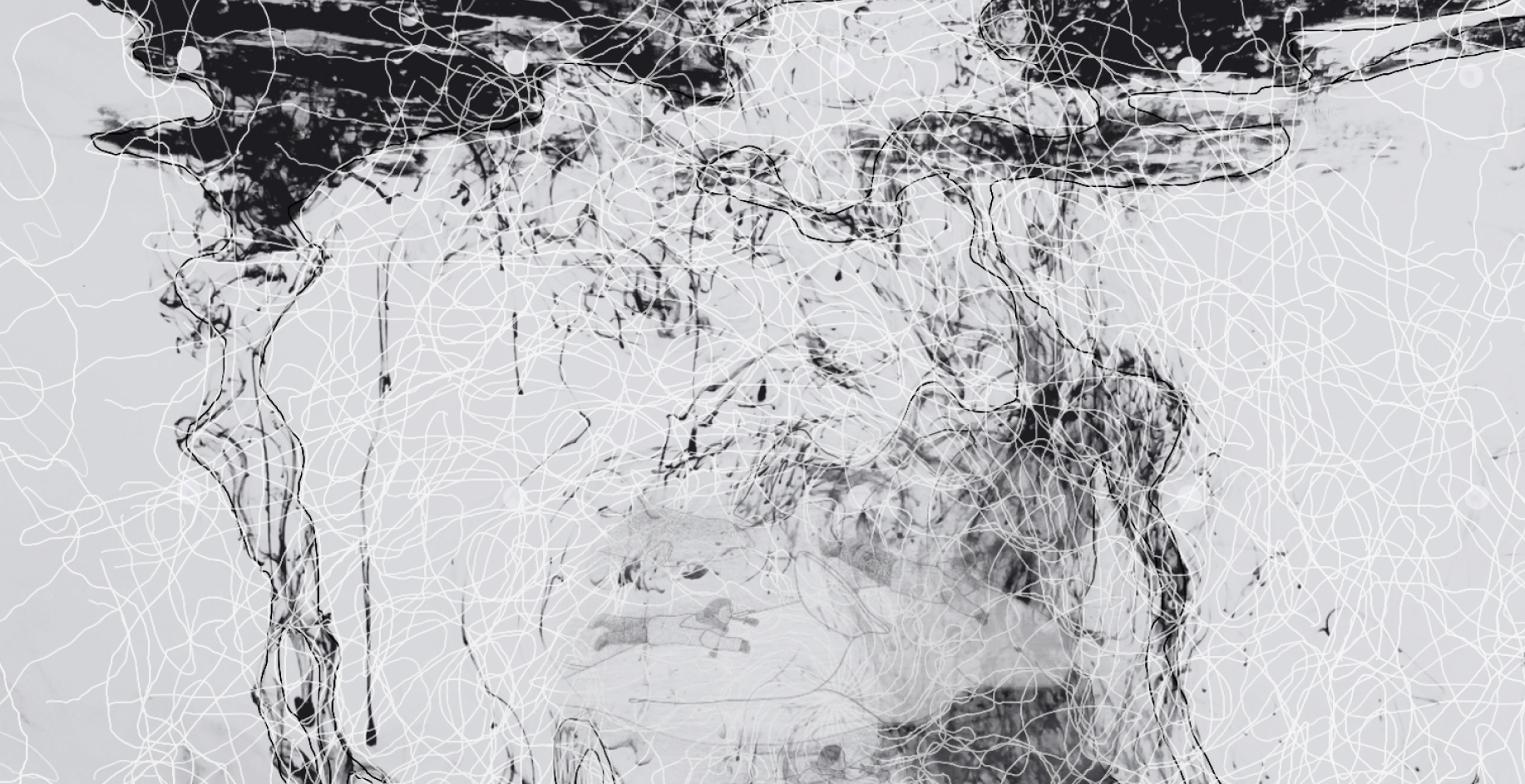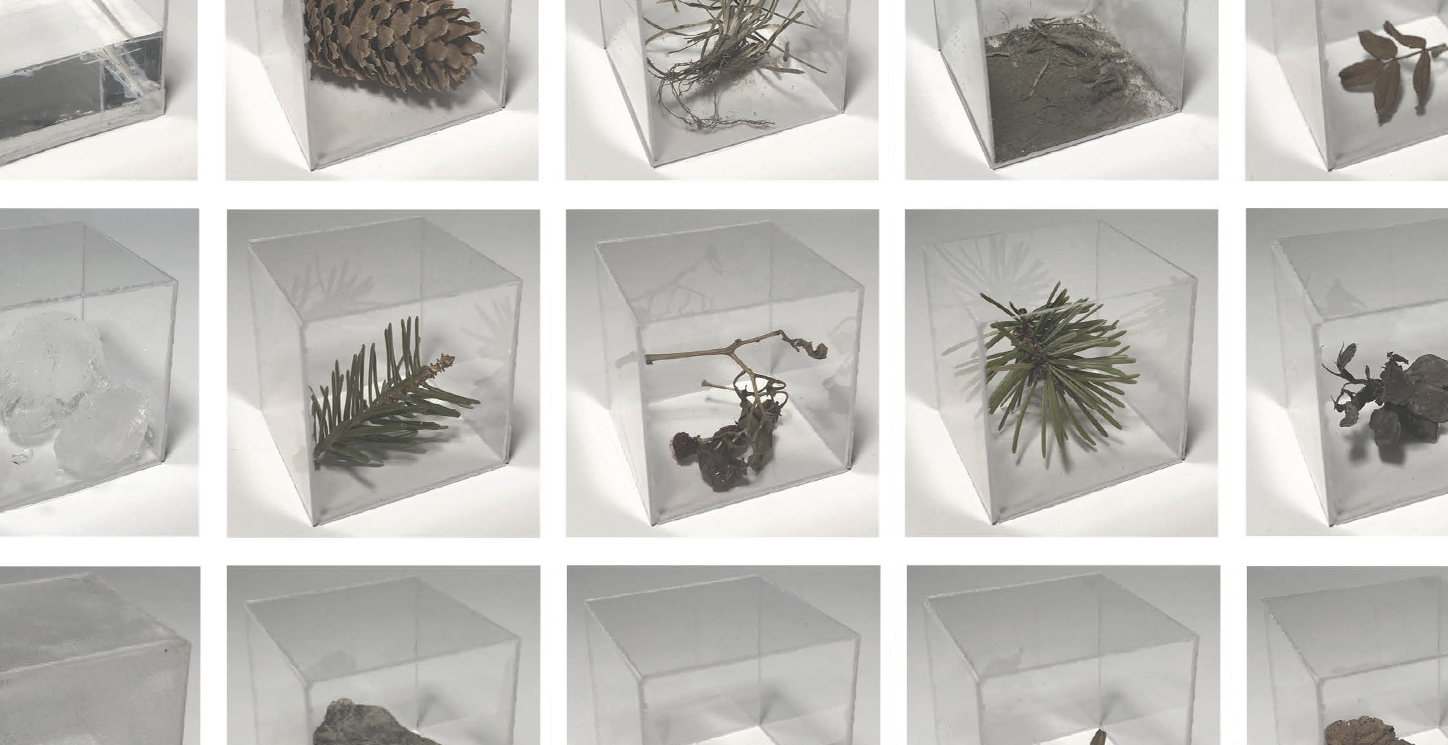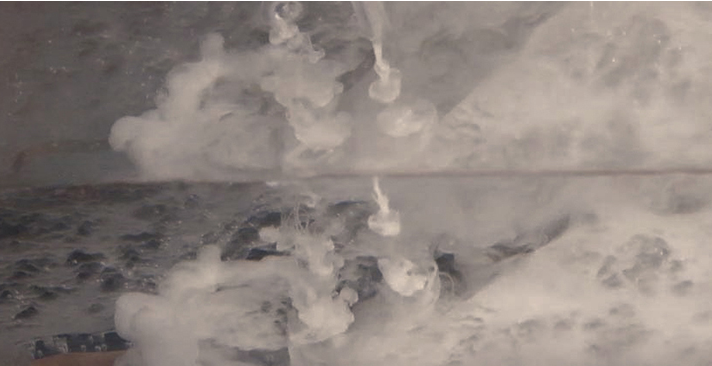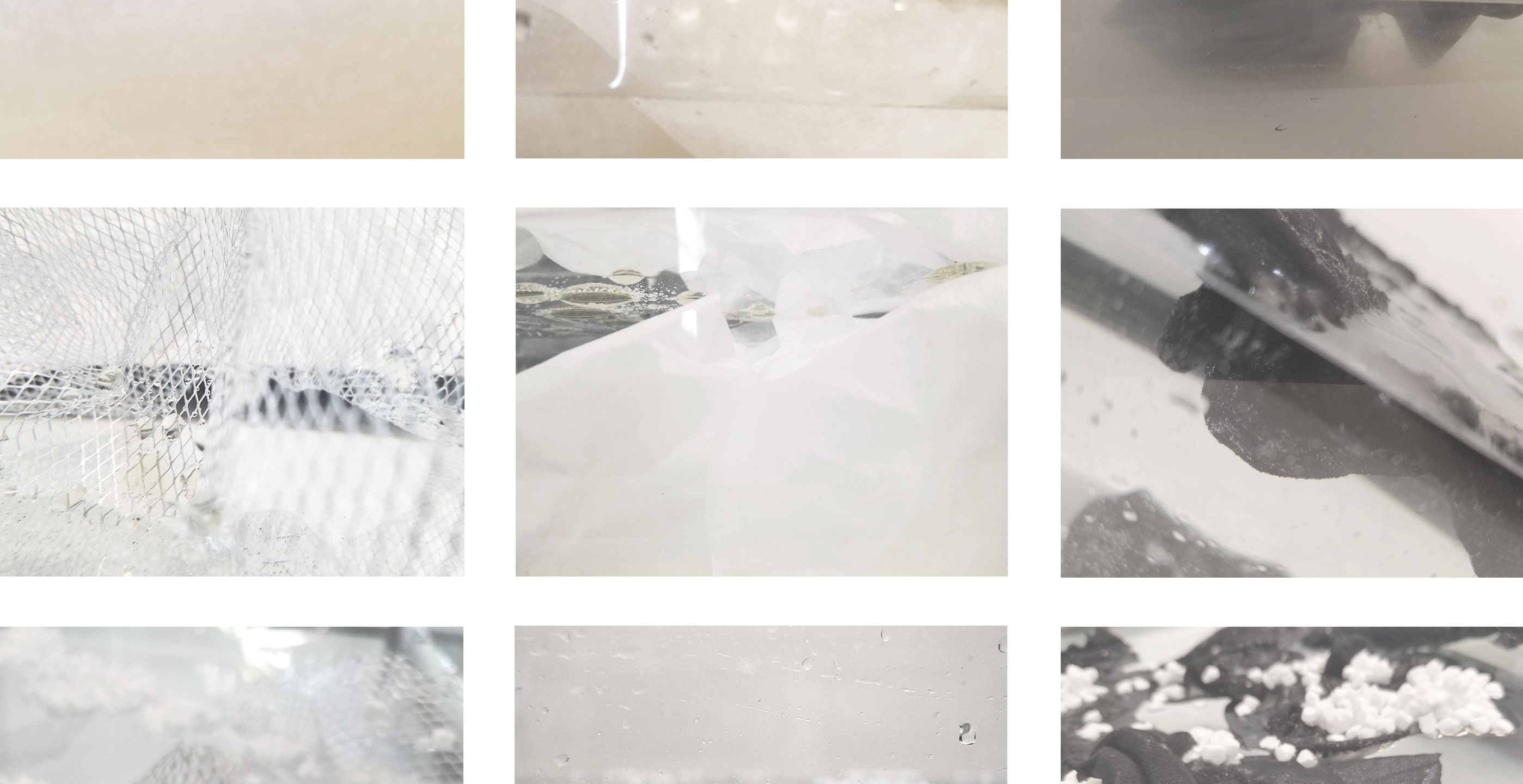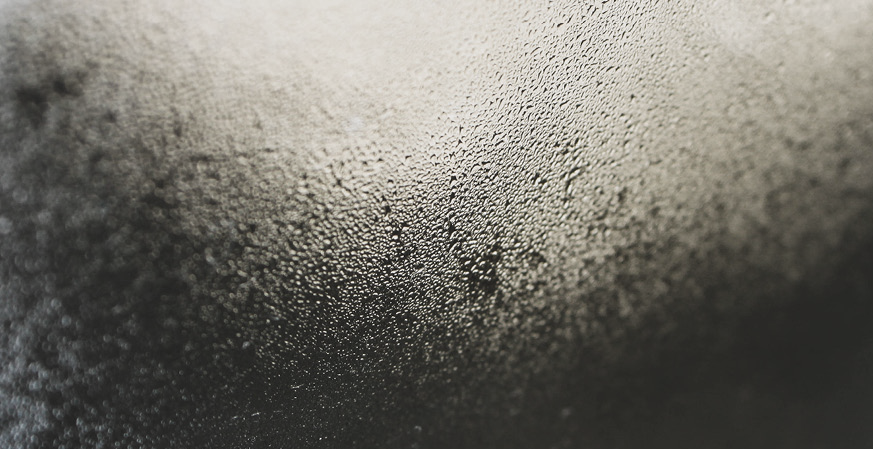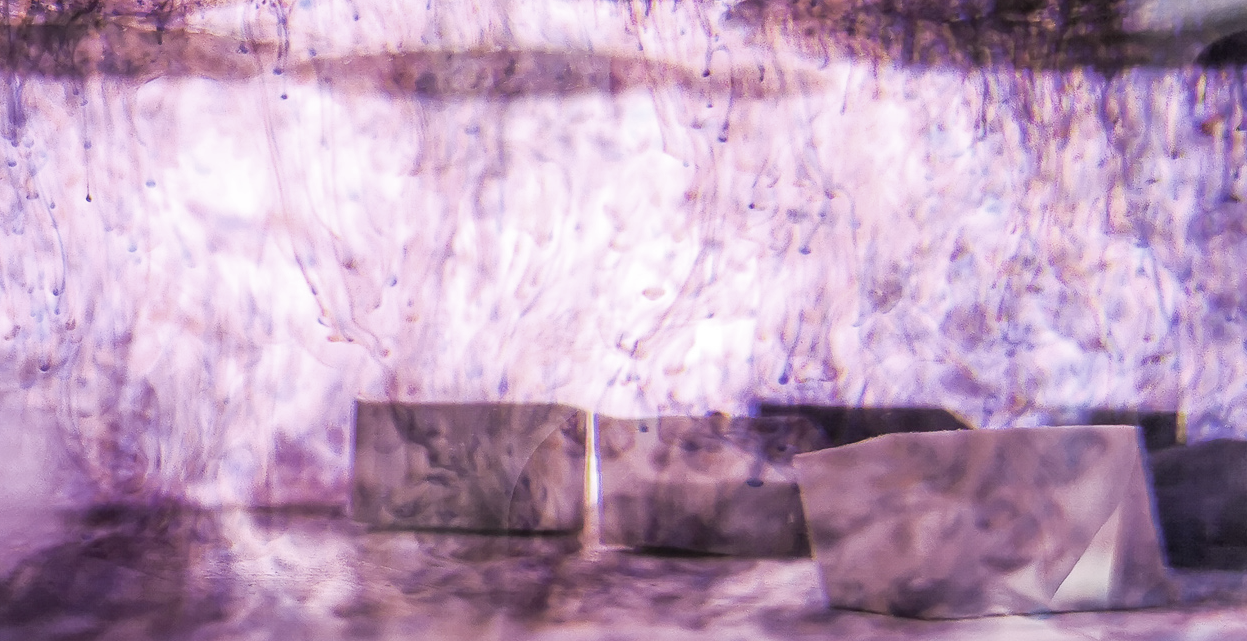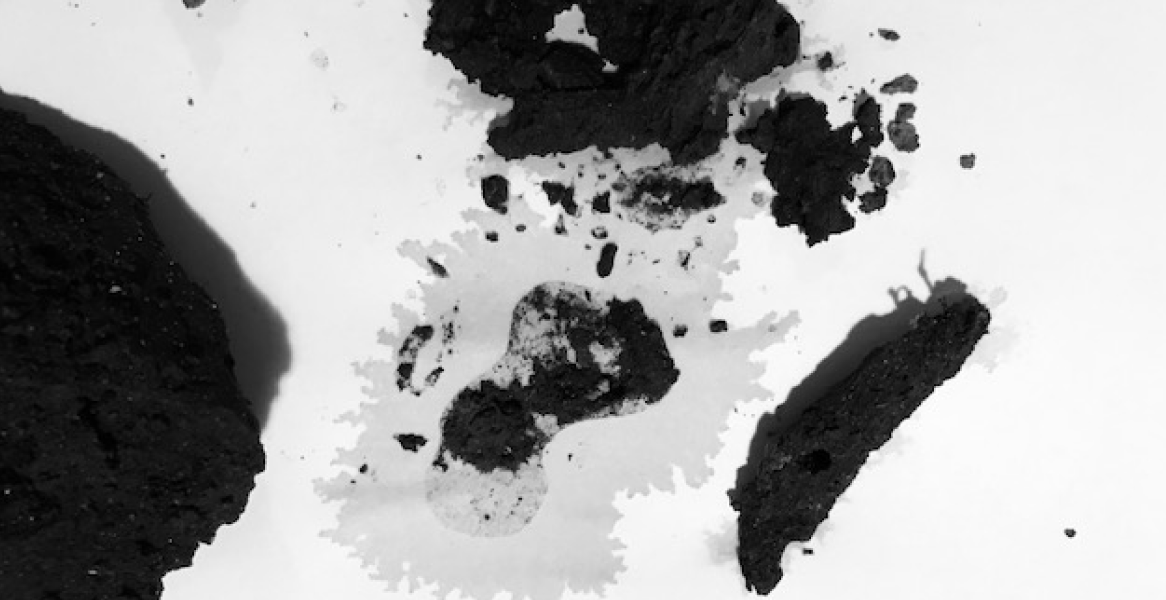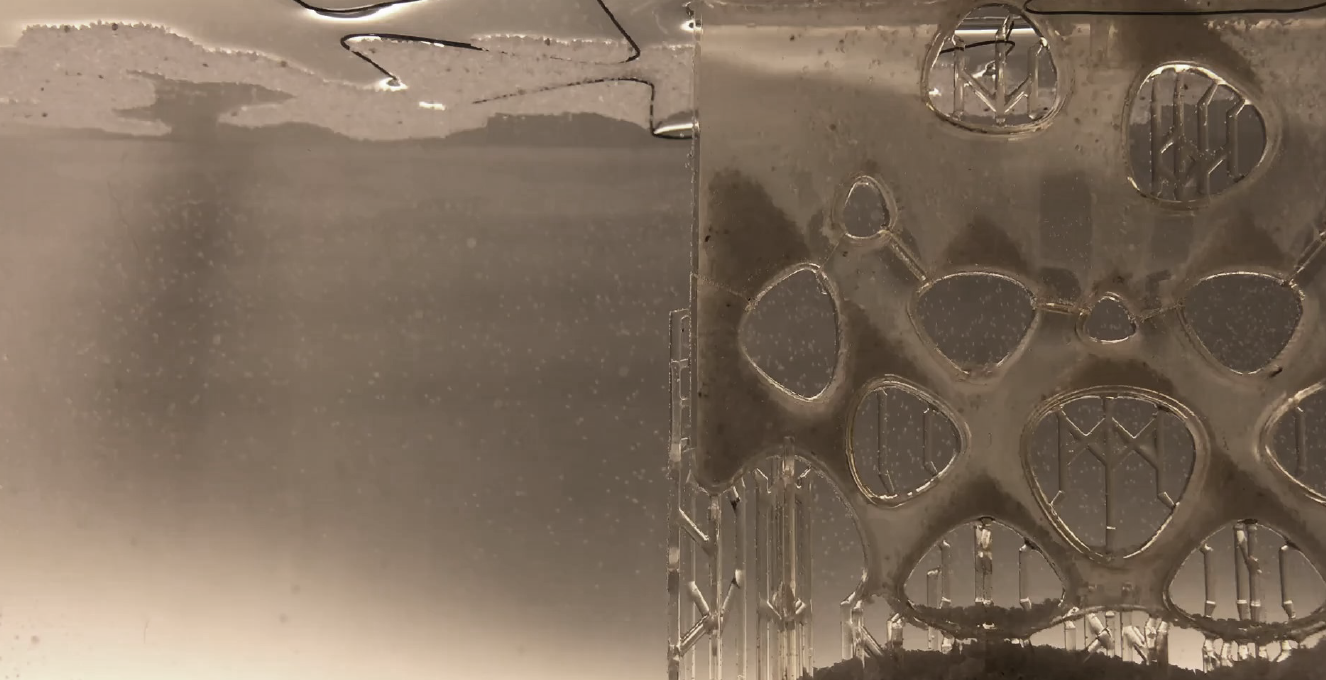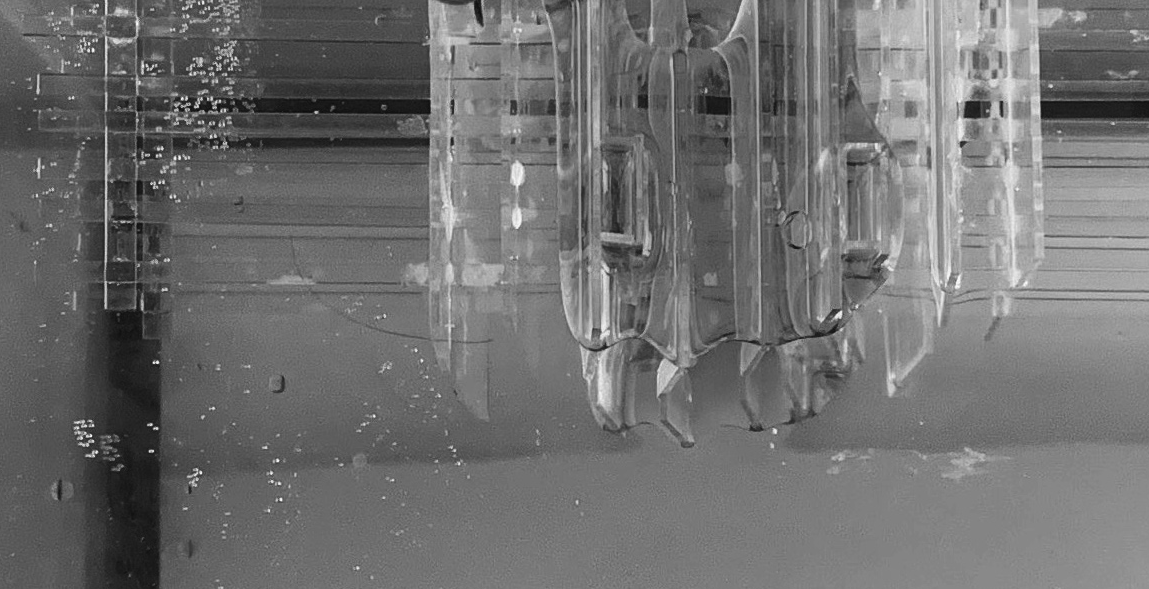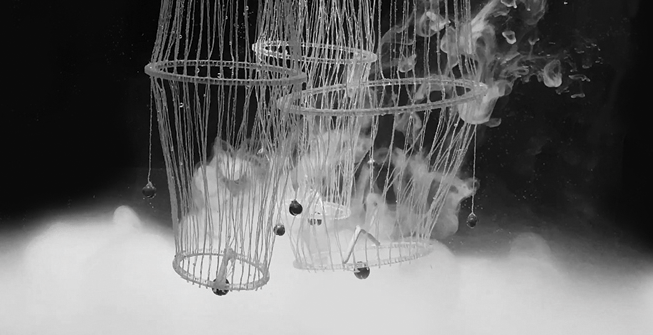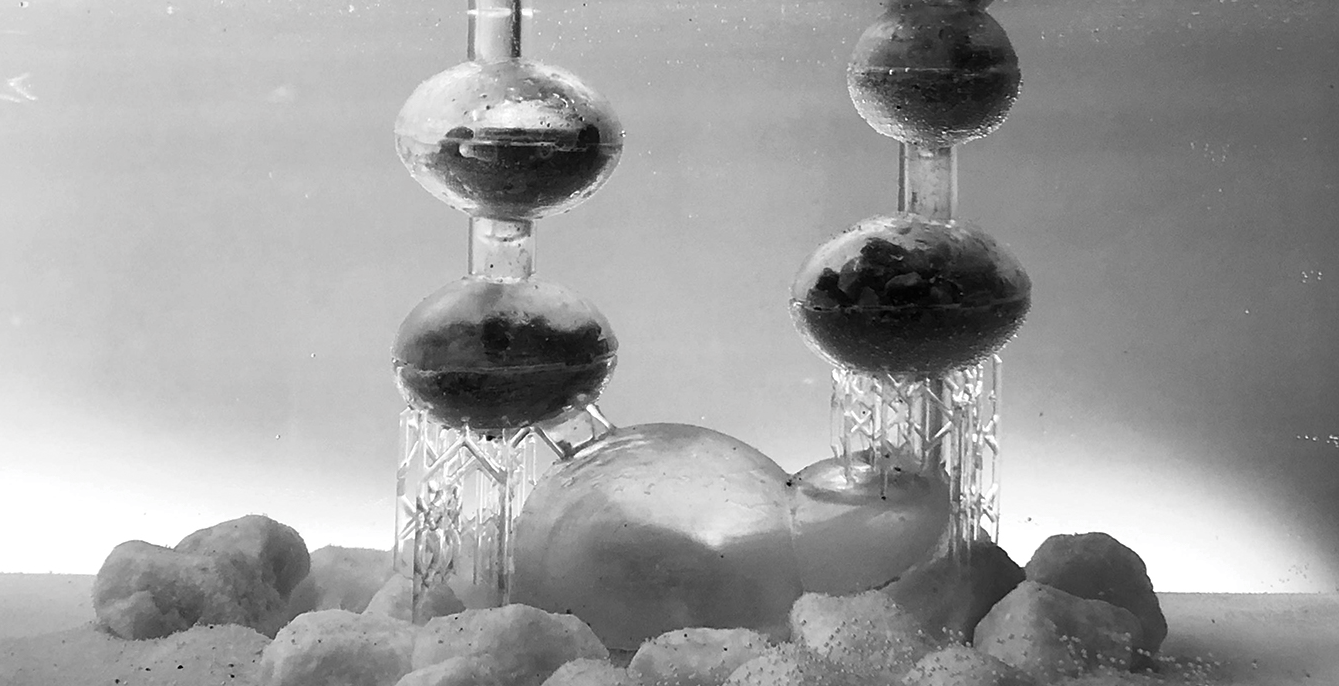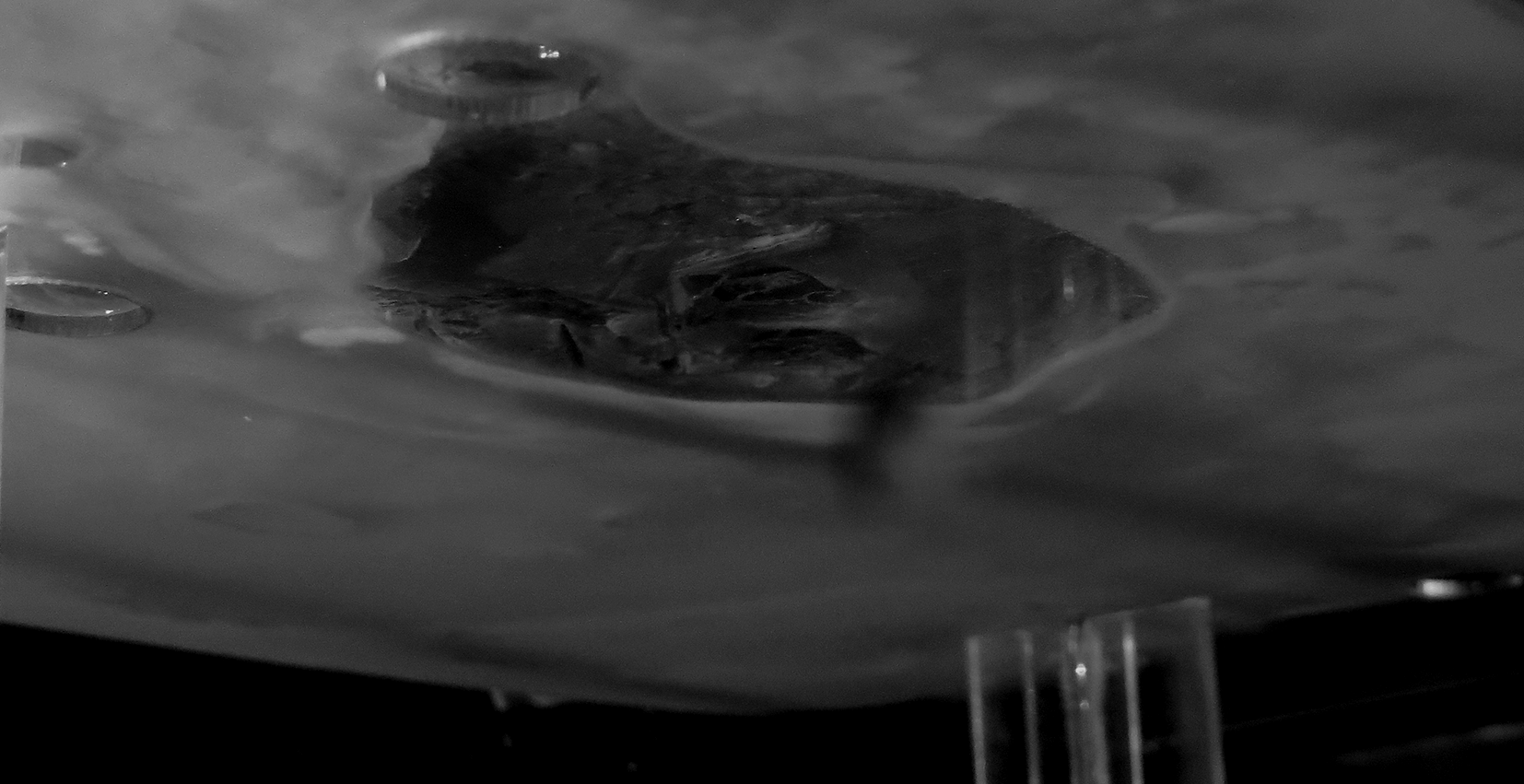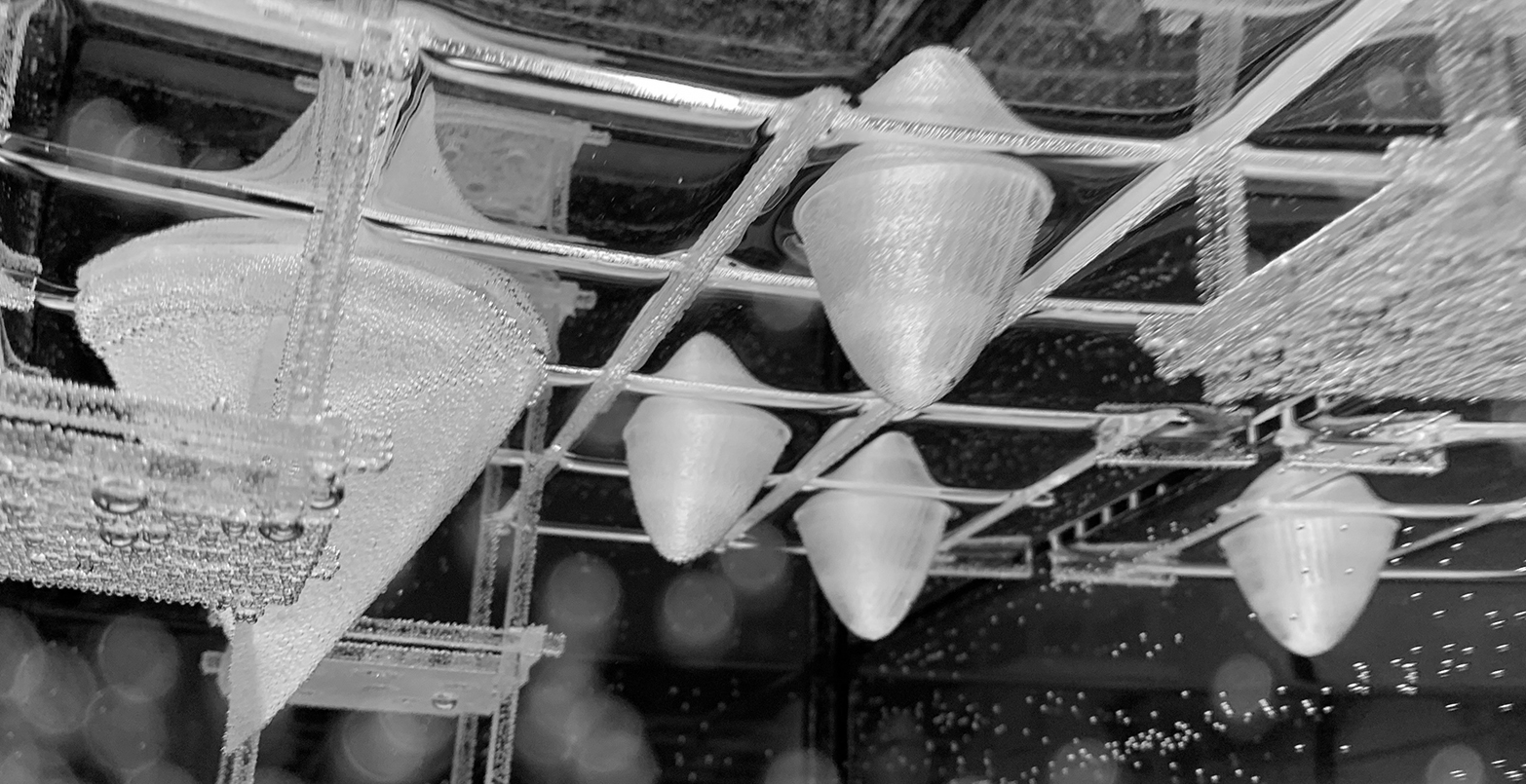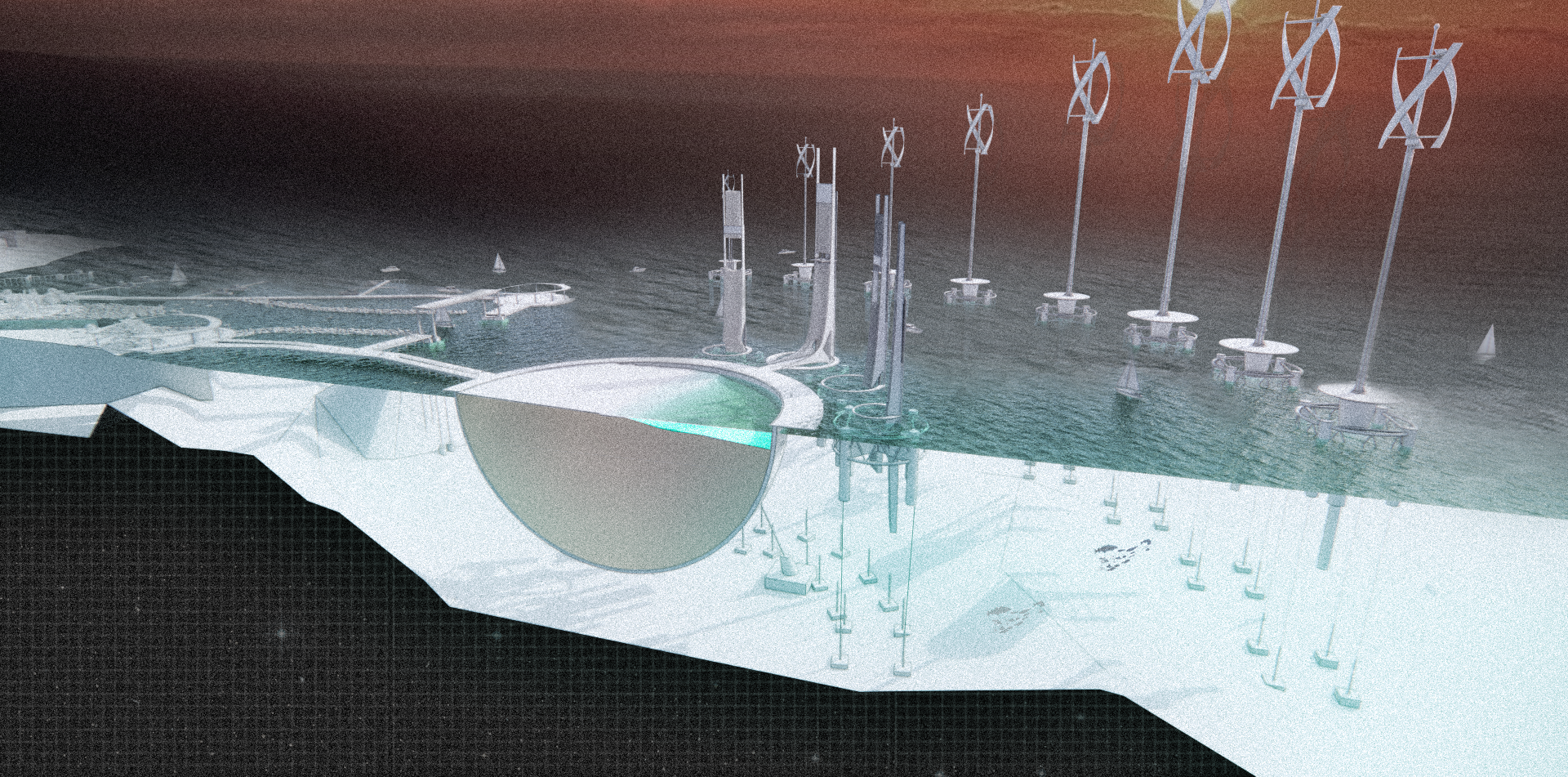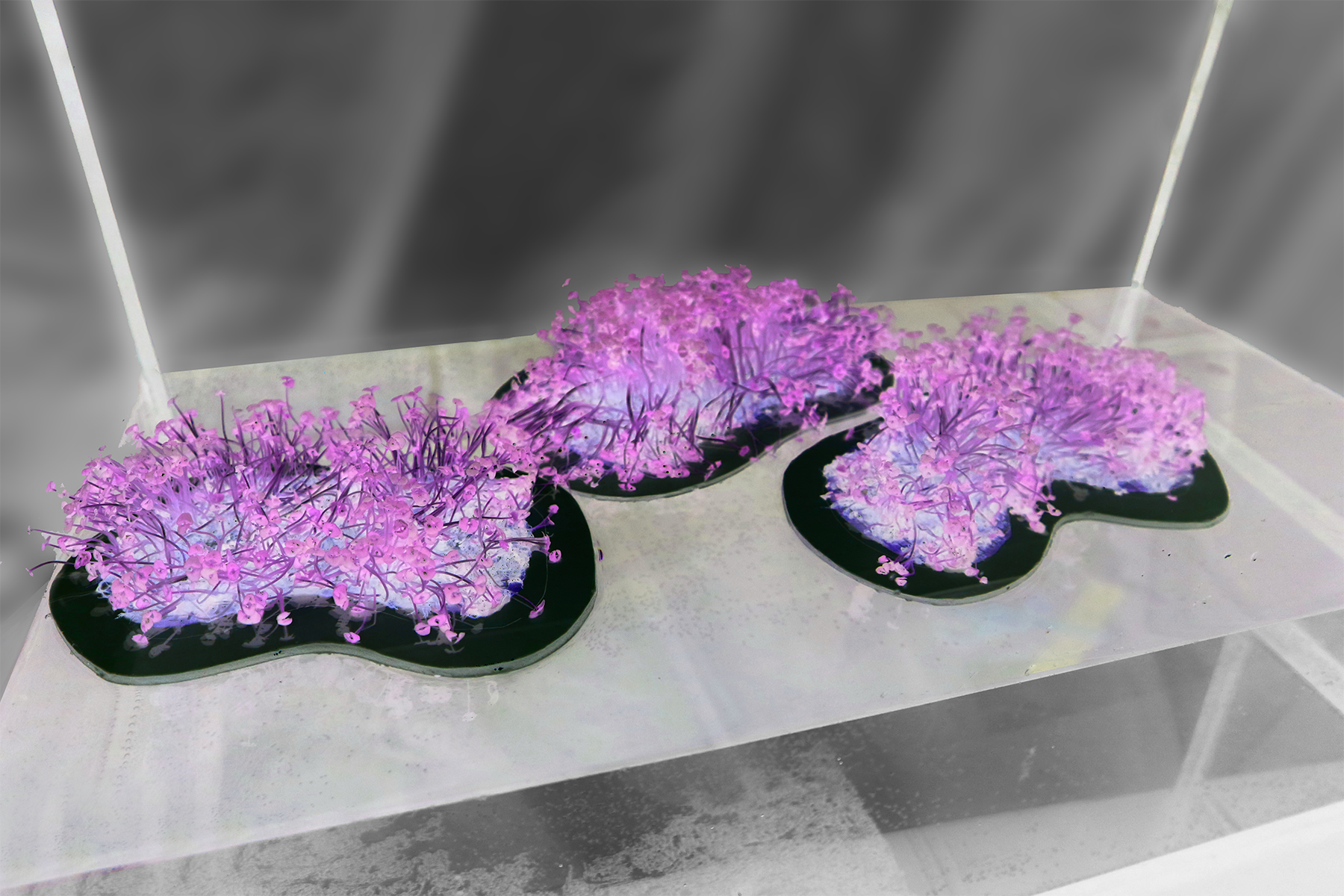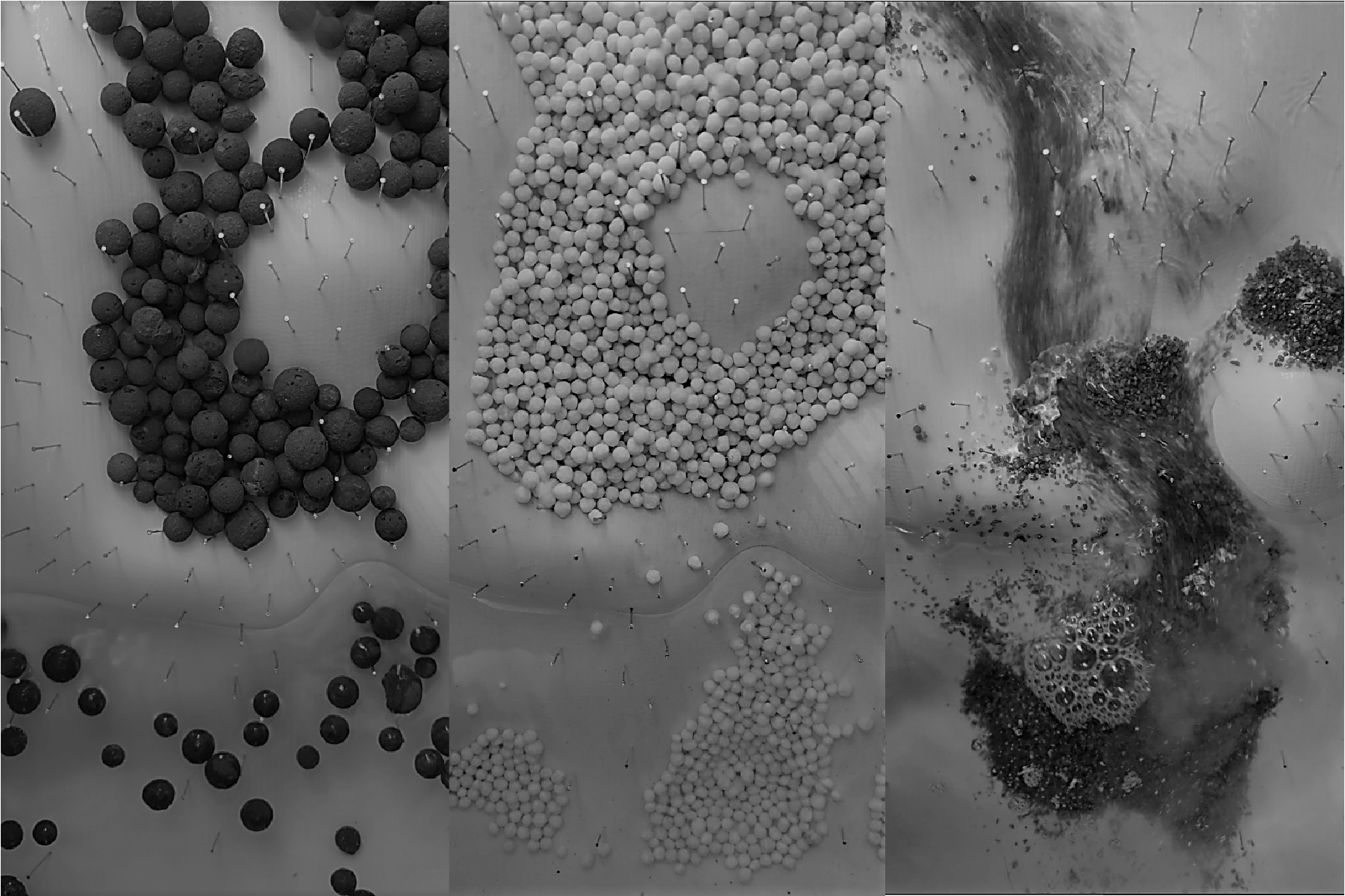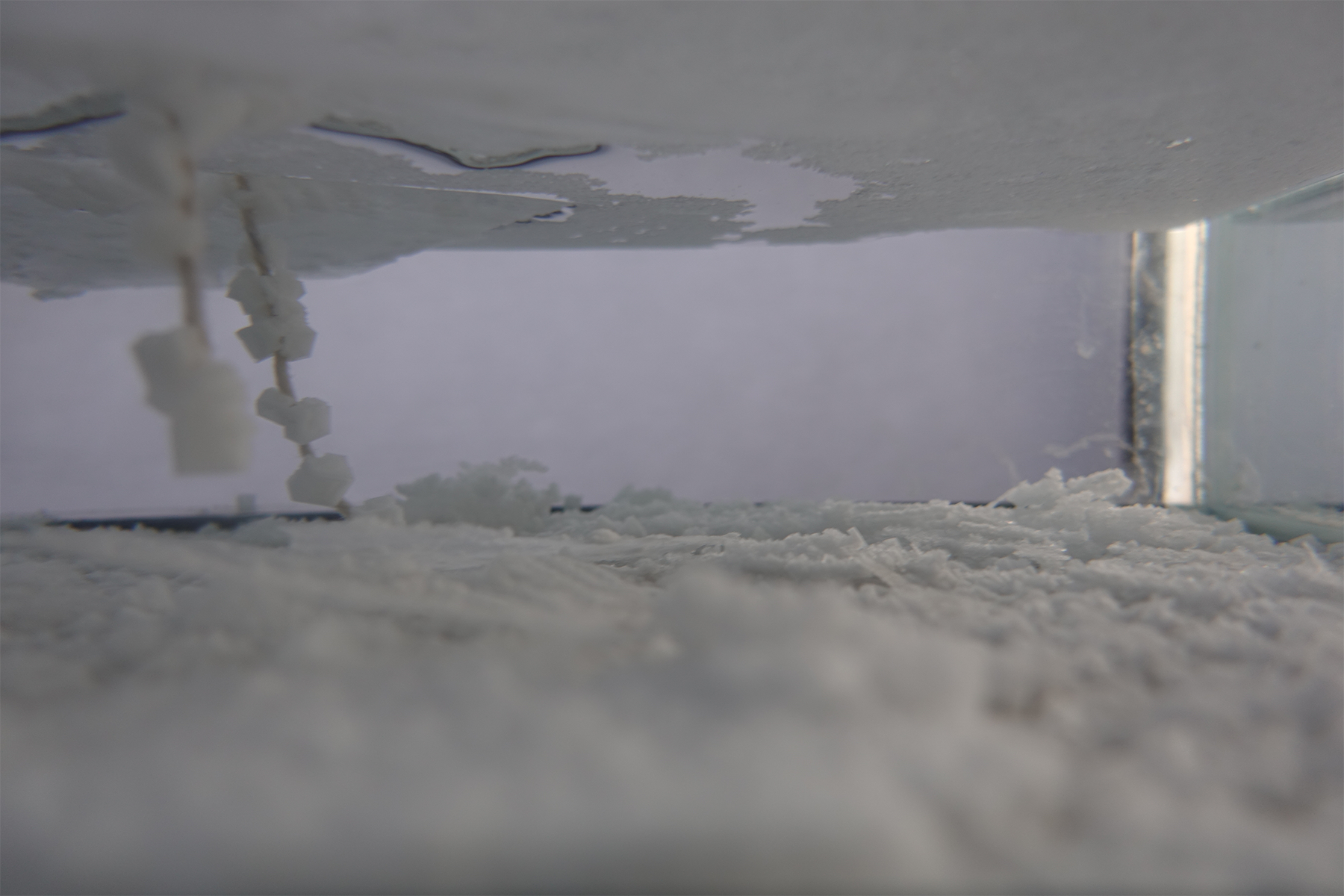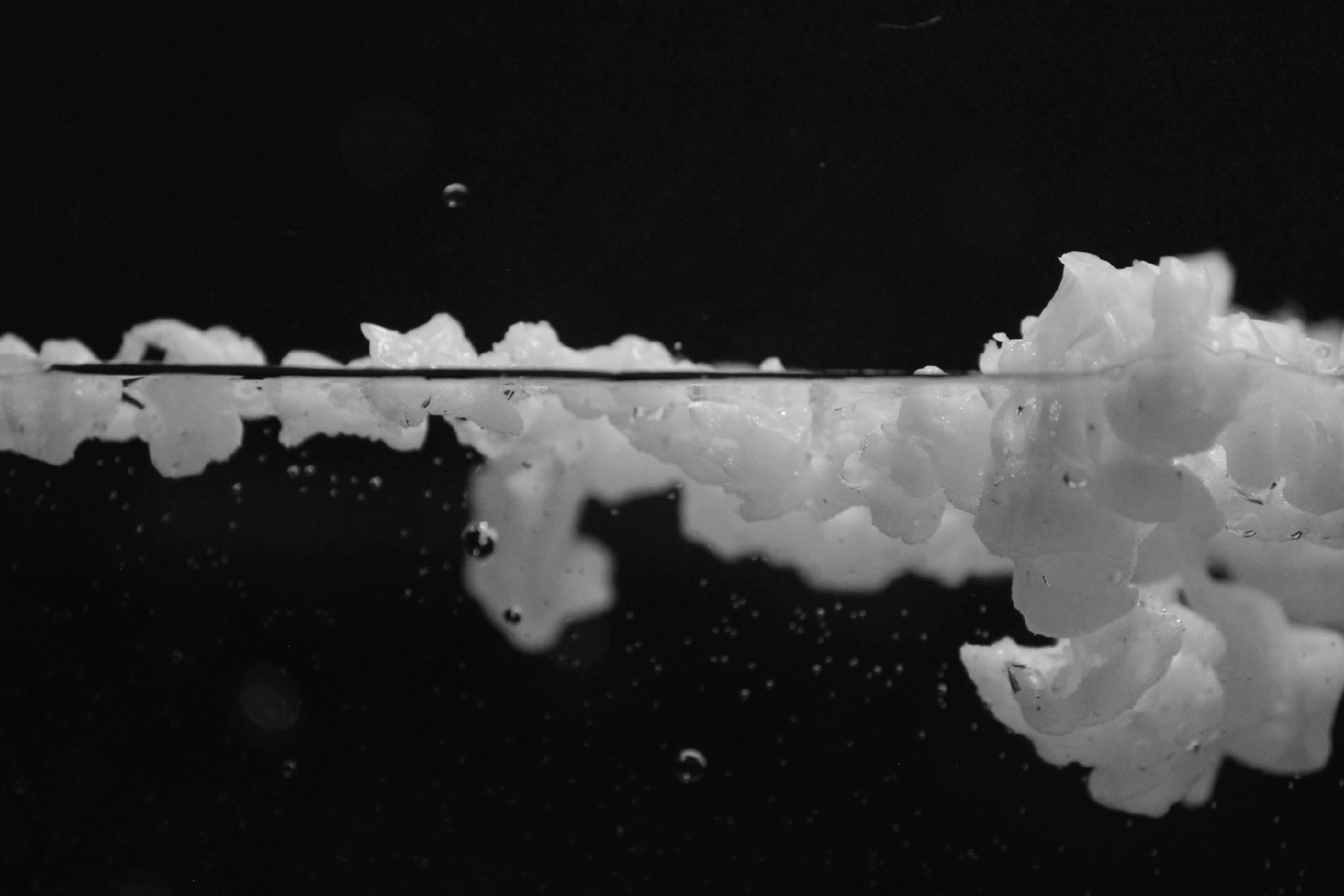
Sophie Ganan Gavela
Tank Worlds : Miniaturising the Gigantic
Geologic Atmospheres
These tank models study existing and proposed geologic processes in an open-pit mine prone to toxic water seepage from its tailings ponds. Leakage, containment, and filtration thus become important strategies for designing in this post-industrial landscape. These processes inform design strategies, intervening at a geologic and human scale. Prior to these tank studies, physical models were used to investigate atmospheric qualities of materiality, lighting, and transparency. Since plaster was the main medium for these models, it was studied in the tank at different states (solid, rubble, liquid, dust) while analyzing its dialogue with water. These models are read as processes that occur in tailings ponds, informing reclamation strategies for the site. These photographs become documentations of the neo-sublime conditions that constitute this post-industrial landscape.

Separation, rubble plaster
Tailings separate into finer pieces that float to the top, while denser components sink to the bottom.

Porosity, solid plaster
Solid components emit bubbles as they sink to the bottom of these ponds, insinuating that these apparent solid components are porous.

Disturbance, liquid plaster
Tailings deposited into containment ponds disturb existing tailings that have separated, creating dust clouds and prolonging the time they must be left in ponds to settle.

Malleability
When drained, the settled tailings become malleable allowing for carving, subtraction, and insertion.

Floating, liquid wax
The lighter components of tailings are found floating at the surface of containment ponds.
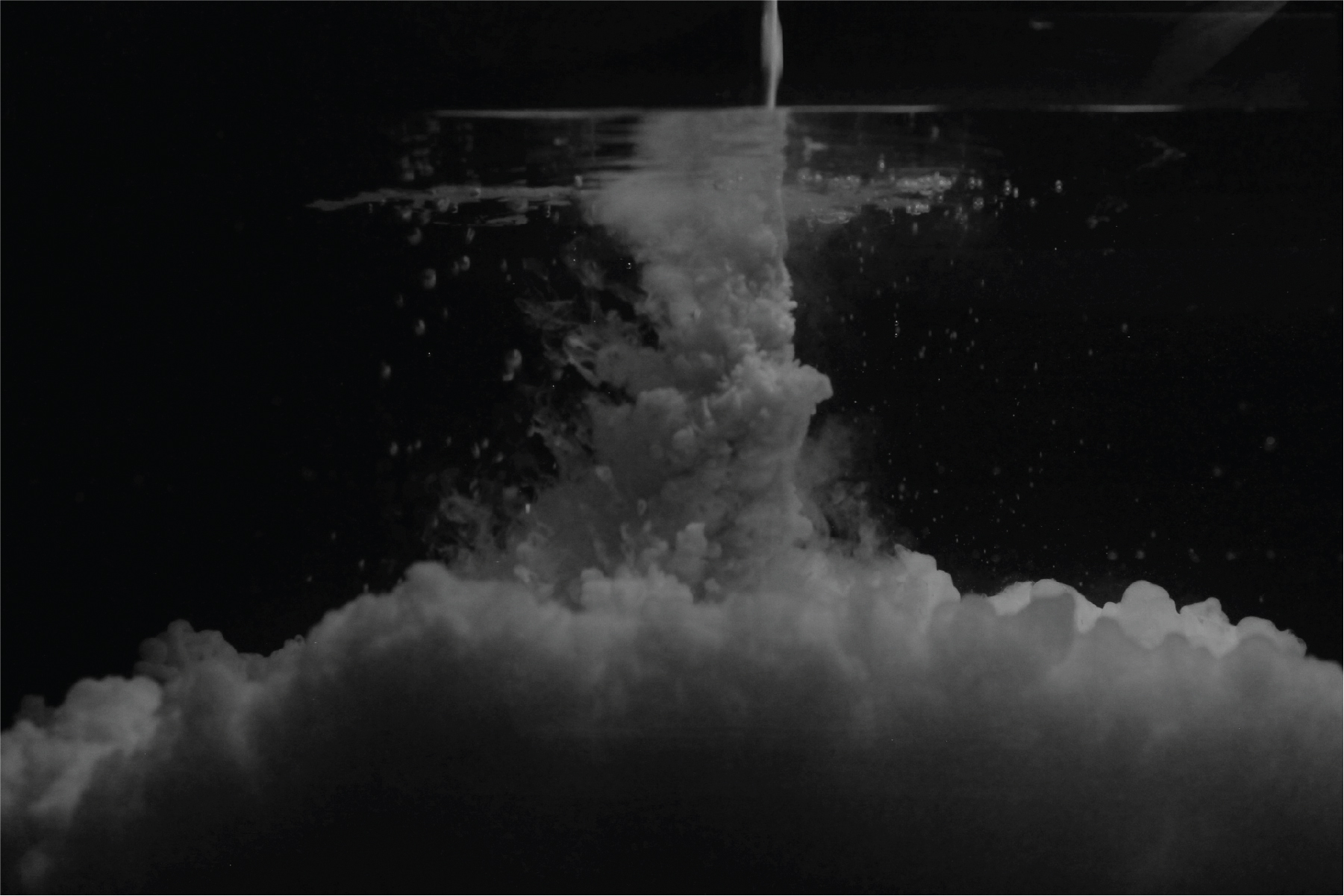
Dispersion, liquid plaster
When tailings are deposited into containment ponds, they spread through the entire surface.

Settling, dust plaster
Once the tailings are left undisturbed, they settle at the bottom allowing for the pond to be drained.

Filtration
Tailings held in planter pods are inserted in containment ponds, limiting the leakage of toxins into the water while neutralizing them through phytostabilization.

